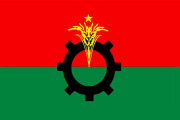When they show up reduce the intensity and increase the rest period between workouts
Mayukh Banerjee: A conditioned athlete can easily recognise the signs of overtraining. But for a newbie these are rarely understood. The symptoms can be a strong demotivator and a cause for giving up a fitness programme.
Whenever the signs of overtraining show up my advice is to reduce the intensity and increase the rest period between workouts. The most common indicators of overtraining:
Insomnia
It is a common symptom. Although the body is tired, the mind refuses to switch off! Sometimes the “restless leg syndrome” accompanies insomnia. It is an incessant irritating feeling of wanting to stretch your leg whenever you lie down to sleep. Reducing the intensity of workout is the only way out.
Muscle soreness
I treat post-workout muscle soreness as a positive sign. During exercise muscles undergo microscopic tears. With adequate rest, they heal and become stronger.
This cycle of breakdown and recovery is what makes resistance training so effective in regaining muscle strength and mass.
Post-workout soreness happens to muscles that are not strong enough. This symptom is most common among beginners and reduces as the body becomes conditioned. It is best avoided by keeping the workout intensity easy initially, and then progressively building it up, as the body toughens. Experience shows that some amount of muscle soreness is unavoidable when beginning a fitness routine.
Mood swings
A good workout does great things to your mind. It immediately reduces anxiety and depression and increases confidence and positivity. Unfortunately, overtraining can have the opposite results.
Fatigue after overtraining can make you temperamental, quick to anger, impatient and anxious. Watch out for these signs soon after workout, and reduce the intensity of the session.
Joint pain
Knees and shoulders are most susceptible to injury due to overtraining. Be conscious of a nagging knee or shoulder ache. If it happens, consult your instructor.
In most cases, these injuries are not serious and heal with time. They are mostly related to the fact that the joints have not been exercised and have lost their inherent strength and flexibility. With time and a good fitness programme, the joints, muscles, tendons and ligaments regain strength and flexibility and the possibility of injury diminishes.
Lethargy
Lethargy and headache (usually back and sides of the head) are common indicators of overtraining. It is the body asking for time to recover.
Headache is also an indicator of possible dehydration. So make sure to be adequately hydrated.
Thumb rule
Overtraining is common among fitness buffs. It is not a bad thing provided the remedial measures of rest and recuperation are taken. The thumb rule is to give 48 hours of rest to muscle groups between workouts. Very hard bouts of workouts will need 72 hours of rest. Finally, the key is to listen to your body and its reaction to your fitness regime, and take steps to optimise it for best results!
Always consult a professional before starting on a workout.
The writer is the founder of Mike’s Martial Arts, a Calcutta-based martial arts and advanced functional fitness studio. Contact: mayukhpb@yahoo.co.in










































































































































































